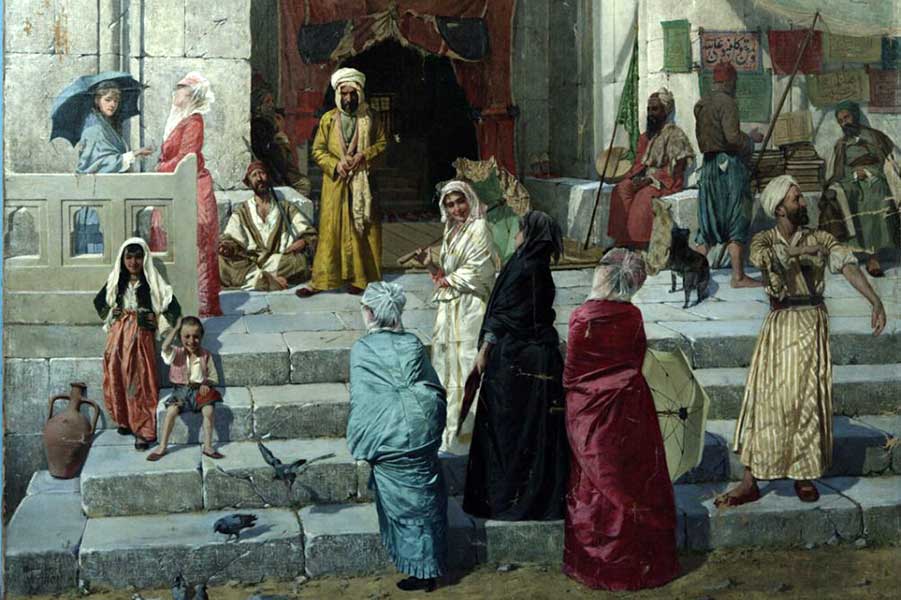The Paintings of Osman Hamdi Bey
Emily Neumeier
Synopsis:
Osman Hamdi Bey (1842–1910) is recognized today as the foremost artist of the late-Ottoman period. Yet, in his time, it was also his unique access to the ancient past as the head of Istanbul’s archaeology museum that drew the special interest of his contemporaries in Western Europe and North America. This talk retraces the story of a rare Osman Hamdi Bey painting—once thought to be lost—that recently surfaced in the storerooms of the Penn Museum in Philadelphia and explains what this work can tell us about art, artifacts, and diplomacy during the late-Ottoman era.
References:
Bahrani, Zainab, Zeynep Çelik and Edhem Eldem, eds, Scramble for the Past: A Story of Archaeology in the Ottoman Empire, 1753–1914 (Istanbul: SALT, 2011). ![]()
Eldem, Edhem. “Making Sense of Osman Hamdi Bey and his Paintings,” Muqarnas 29.1 (2012): 339–383. ![]()
Shaw, Wendy M. K. “The Paintings of Osman Hamdi and the Subversion of Orientalist Vision.” In Aptullah Kuran İçin Yazılar: Essays in Honor of Aptullah Kuran, ed. Çiğdem Kafescioğlu and Lucienne Thys-Şenocak (Istanbul, 1999), 423–34. ![]()
Shaw, Wendy M. K. Possessors and Possessed: Museums, Archaeology, and the Visualization of History in the Late Ottoman Empire. Berkeley: University of California Press, 2003. ![]()
University of Pennsylvania Museum of Archaeology and Anthropology. “Archaeologists and Travelers in Ottoman Lands.” On-line exhibition catalogue. Philadelphia: University of Pennsylvania Museum of Archaeology and Anthropology. Accessed 16 October 2020. ![]()
Citation:
Emily Neumeier, “The Paintings of Osman Hamdi Bey,” Khamseen: Islamic Art History Online, published 28 August 2020.

Emily Neumeier is Assistant Professor of Art History at Temple University. Her research concerns the art and architecture of the Eastern Mediterranean, particularly of the Ottoman Empire and the Turkish Republic.


